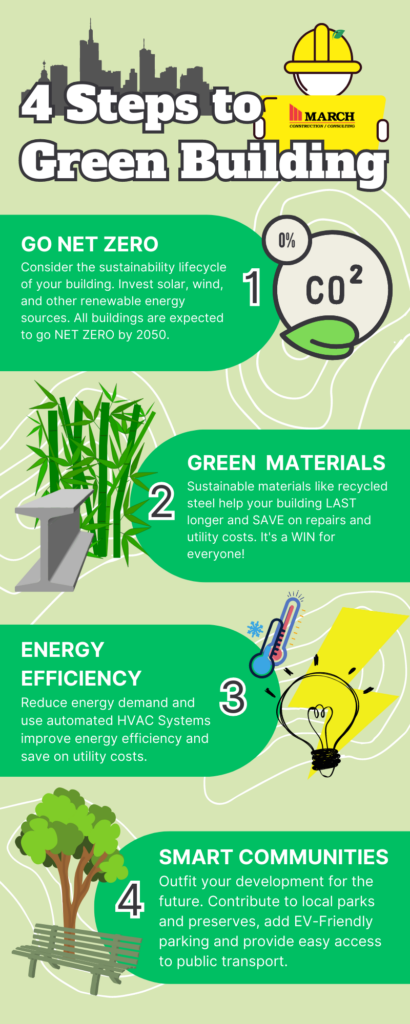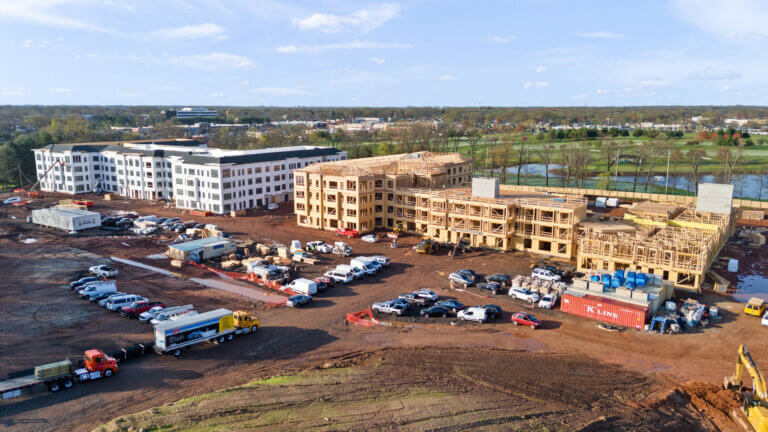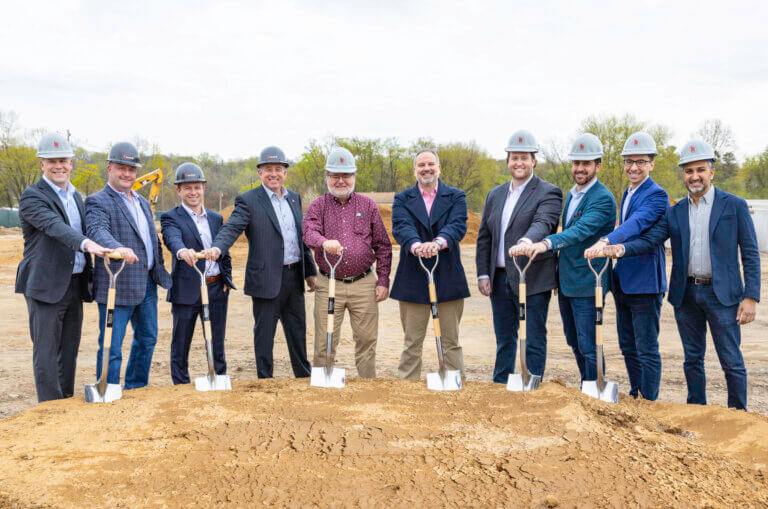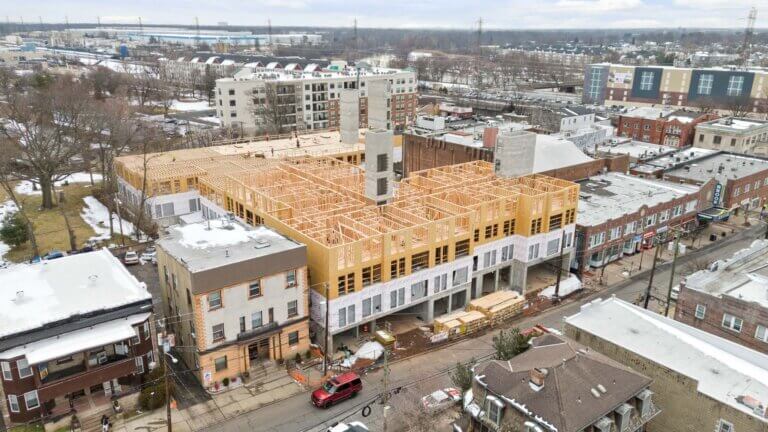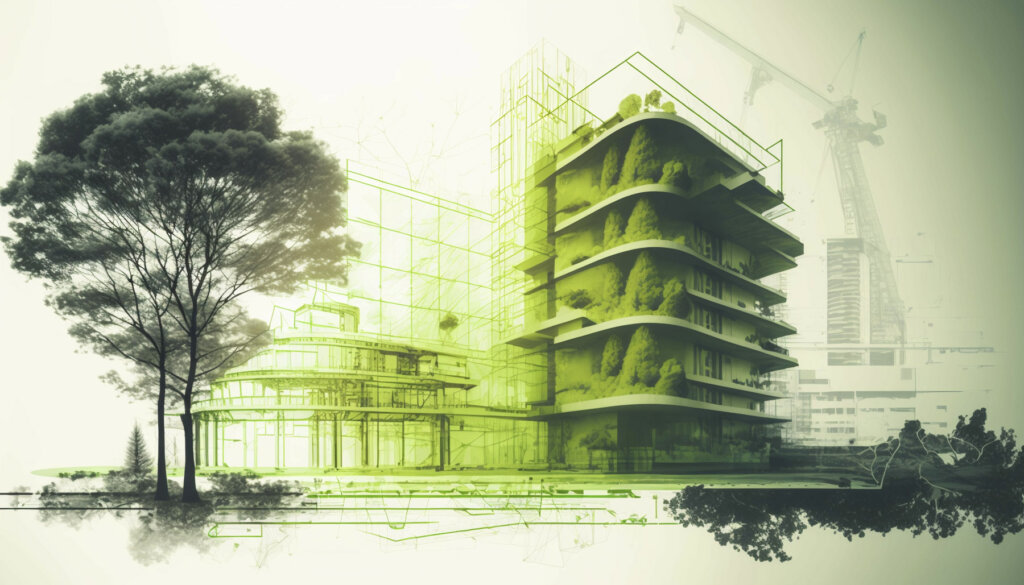
In celebration of Earth Day, we’ve put together a list of the top 4 sustainable construction trends that are shaping the future of commercial real estate development and building construction.
Whether you’re a contractor, builder, or property owner, it’s important to stay informed about the latest sustainable building practices.
As society becomes more aware of the need to preserve our planet for future generations, the push for sustainability has become stronger in every area of our lives.
One such area where sustainable practices are taking root is in the construction industry, where green building and sustainable design are becoming increasingly popular.
This trend is especially prominent in commercial building construction, where building owners can benefit from reduced operational costs, improved indoor air quality, and a lower carbon footprint.
In this article, we’ll explore some of the latest sustainable building trends that commercial building owners should watch out for in 2023.
Four Sustainable Commercial Building Trends to Watch in 2023
1. Net Zero Energy Buildings
Net-Zero buildings are designed to produce as much energy as they consume, making them highly energy-efficient and environmentally friendly.
This means that the building’s energy usage is offset by the renewable energy it generates.
With the increasing focus on reducing carbon footprints and meeting energy efficiency targets, we expect the trend toward net-zero buildings to continue in 2023.
By incorporating renewable energy sources and smart technology for building energy management, building owners can significantly reduce energy consumption and costs while contributing to a more sustainable future.
2. Green Building Materials
Green building materials are sourced sustainably and have a reduced environmental impact.
They are becoming increasingly popular in construction, as they can help reduce waste and energy consumption.
In 2023, we expect to see more innovative sustainable materials in the construction industry, including recycled steel, cross-laminated timber, and bamboo.
The choice of HVAC materials and HVAC systems automation has a big impact on sustainability by reducing energy consumption. This also saves significantly on heating and cooling costs.
These materials are not only environmentally friendly, but they also provide unique architectural designs that can make a building stand out.
3. Energy-Efficient HVAC Systems
Heating, ventilation, and air conditioning (HVAC) systems account for a significant portion of a building’s energy use.
Energy-efficient HVAC systems can help reduce energy consumption and costs while improving indoor air quality.
In 2023, the trend towards energy-efficient HVAC systems is expected to continue, with building owners seeking out systems that use renewable energy sources and smart technology for building energy management.
Building owners should also focus on indoor air quality and ensure that their HVAC systems are designed to provide fresh air and proper ventilation.
4. Smart Building Technology
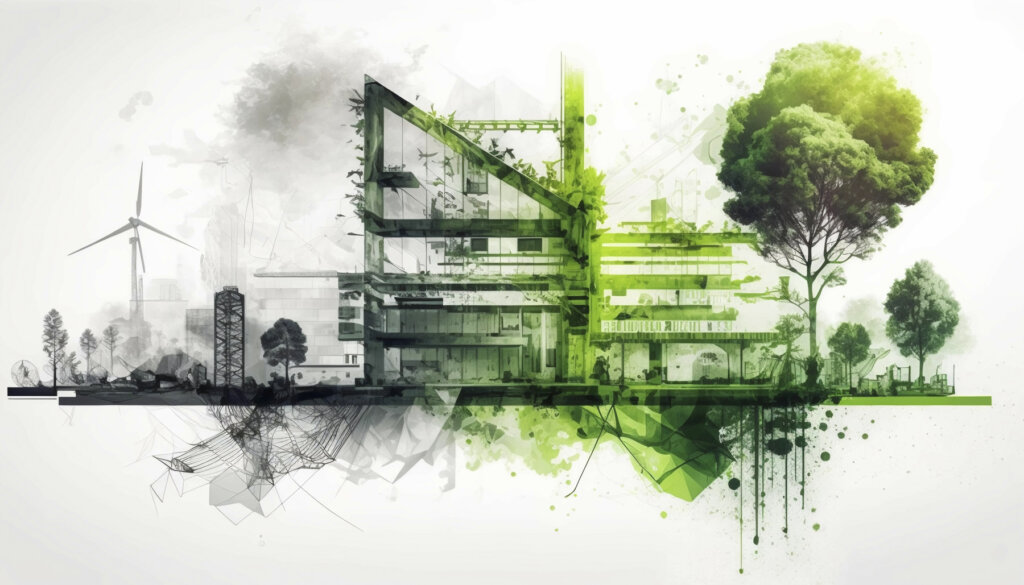
Smart building technology refers to the integration of advanced technology systems into a building’s design and operation.
These systems can help building owners monitor and optimize energy use, reduce waste, and improve building performance.
Building owners can also offset their carbon footprint by creating EV-friendly parking garages, developing near public transport to encourage group transportation, and investing in local parks and preserves for the enjoyment of their tenants and the protection of the local environment.
One excellent example of this taking place in 2023 is the 212 Durham Avenue development. Click to read more about this project and how they are investing in and protecting a large local preserve in Metuchen, NJ.
In 2023, we expect to see an increase in the adoption of smart building technology, with building owners investing in sustainable building construction practices that can help them achieve sustainability goals and comply with environmental regulations.
With the use of advanced sensors, HVAC automation systems, and data analytics, building owners can track building performance and identify areas for improvement.
Sustainable building construction offers numerous benefits for commercial building owners, including reduced energy costs, improved indoor air quality, and a lower environmental impact.
Achieving green building certification, such as LEED certification, is becoming increasingly important as it can help businesses meet increasingly stringent sustainability goals and reduce greenhouse gas emissions.
Sustainable building trends are constantly evolving, and building owners must stay up-to-date with the latest developments to remain competitive and compliant with environmental policies.
By incorporating net-zero energy buildings, green building materials, energy-efficient HVAC systems, and smart building technology, commercial building owners can create environmentally friendly buildings that are efficient, cost-effective, and attractive to environmentally conscious customers.

